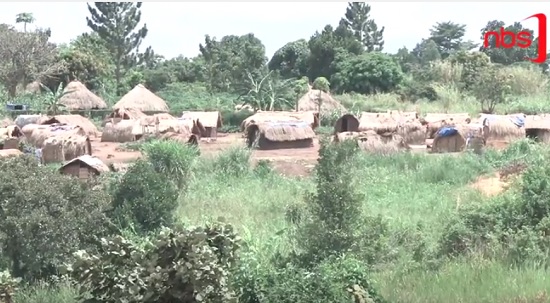
The government rolling out of systematic land registration for farmers to use as credit collateral is only glass half-full
By Okumu Mike Ibrahim
The agriculture sector in Uganda is typically driven by smallholders with 95 percent of them operating on less than 5 acres of land. The smallholders operate in an environment of multiple and sometimes overlapping complexities such as inadequate access to production means, lack of know-how, cumbersome access to markets and market information, cultural barriers and investment deterrents leading to under investment and low production yields. These perpetuate household poverty and inequality and aggregately tamper with the speed of Uganda’s social and economic transformation.
Of concern to this write up is the inadequate access to production means such as farm inputs which is partly related to inadequate access to finance. Indeed, the 2013 Finscope study indicates that 65 percent of rural households are excluded from the credit market. While for those that can access credit, 19%, 5%, 7% and 4% get credit from informal sources, banks, other formal sources and family respectively.
While both family and informal credit smoothen household consumption and also enable some agricultural investments to be undertaken, their potential is not comparable to the Uganda Shillings 12 trillion amount of credit that formal institutions avail to the private sector of which the agriculture sector only taps 11 percent as of February 2017.
To, therefore, have only 12% of rural households accessing formal credit suggests undermined agriculture productivity, low incomes, and perpetuation of income inequality.
In an effort to induce household access to credit, government rolled out systematic land registration at least in rural and peri- urban areas over the period 2015/16 to 2018/19. While the exercise gives value to land and empowers rural households to, by collateralizing land, access formal credit to partly enhance agriculture production through enabling affordability of production means, there is an inherent risk of landlessness growing in case of failure to service the formal debts. The potential for this failure is high because agriculture production in Uganda is largely reliant on nature which is unpredictable.
Indeed, a study in Ethiopia indicates that climate failure without any form of microinsurance is associated with households selling off assets. This worsens their already dire economic situation. To, therefore, induce formal credit uptake among farmers without developing appropriate microinsurance products would only perpetuate basket case household livelihoods; especially given the sporadic weather variations.
In essence, inducing credit uptake by farmers ought to be complimented with strategic government incentives through, for example, favorable tax regimes to private providers of microinsurance products. It could also be done through direct involvement in developing microinsurance products through, for example, Post Bank, Housing Finance Bank and Pride Microfinance where the government is a majority shareholder.
Microinsurance could be indexed on natural disasters happening such El Nino, La Nina or even pest outbreaks such as armyworm. Such microinsurance schemes mitigate income losses that could arise from natural disasters and lower the potential of loan default and perhaps loss of land.
However, even with microinsurance there is a potential risk of loan default. Indeed, lessons from Malawi, where Opportunity International Bank of Malawi and Malawi Rural Finance Corporation extend loans to farmers alongside microinsurance, indicates that the success of such a program relies on a better integration of farmers within the value chain through seamless linkage of farmers to qualified input suppliers and buyers of farm produce besides better contract execution.
Furthermore, where farmers have exposure to risks beyond natural disasters; for example misinformation about appropriate planting times or defective farm inputs, there is likely to be low preference for microinsurance. As such microinsurance ought to be complimented with advisory services through effective communication of timely planting periods, weather variations, prices, accredited input suppliers, and new farm technologies among others. These could mitigate fluctuations in farm yield and incomes necessary to finance credit.
Therefore, while the initiative to promote land registration is a welcome gesture in enabling farmers to access bank credit to enhance productivity and yields, it ought to be complimented with the development of microinsurance products alongside dealing with other negative externalities as earlier highlighted. Otherwise, the risk of landlessness is apparent.
****
Okumu Mike Ibrahim, PhD, is a lecturer in the School of Economics of Makerere University in Kampala
 The Independent Uganda: You get the Truth we Pay the Price
The Independent Uganda: You get the Truth we Pay the Price


